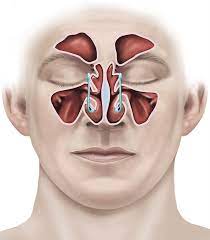A lot of this microbes in the nose might demolish sensitivity side effects
Categories: science education

A lotof this microbes in the nose might demolish sensitivity side effects
A sort ofmicrobes that is overabundant in the nasal entries of individuals with roughagefever might demolish side effects. Focusing on that microorganisms mightgive a method for getting control over steadily running noses.
Roughagefever happens when allergens, like dust or form, trigger a provocative responsein the nasal entries, prompting irritation, sniffling and spilling over bodilyfluid. Analysts broke down the creation of the microbial populace in the nosesof 55 individuals who have roughage fever and those of 105 individuals whodon't. There was less variety in the nasal microbiome of individuals who haveroughage fever and significantly all the more a bacterial animal varietiescalled Streptococcus salivarius, the group reports online January 12 in NatureMicrobial science.
S.salivarius was multiple times more bountiful in the noses of sensitivityvictims than the noses of those without sensitivities, says Michael Otto, a sub-atomicmicrobiologist at the Public Organization of Sensitivity and IrresistibleSicknesses in Bethesda, Md. That lopsidedness seems to have an impact inadditional inciting sensitivity side effects. In research center analyses withallergen-uncovered cells that line the aviation routes, S. salivariussupported the cells' creation of proteins that advance aggravation.
What's more,incidentally, S. salivarius truly loves runny noses. One unmistakable,upsetting side effect of roughage fever is the overproduction of nasal release.The analysts tracked down that S. salivarius ties to aviation route liningcells presented to an allergen and slathered in bodily fluid — better than acorrelation microscopic organisms that likewise lives in the nose.
The nearbycontact gives off an impression of has the effect. It implies that substanceson S. salivarius' surface that can drive irritation — normal amongnumerous microorganisms — are adequately close to apply their impact on cells,Otto says.
Roughagefever, which upsets everyday exercises and upsets rest, is assessed toinfluence upwards of 30% of grown-ups in the US. The new examination makes theway for "future examinations focusing on this microscopic organisms"as a likely therapy for roughage fever, says Mahboobeh Mahdavinia, a doctorresearcher who concentrates on immunology and sensitivities at Rush CollegeClinical Center in Chicago.
In anycase, any treatment would have to try not to hurt the "upside"microorganisms that live in the nose, says Mahdavinia, who was not engaged withthe examination.
The proteinson S. salivarius' surface that are mean quite a bit to its capacity to connectto bodily fluid covered cells could give an objective, says Otto. The microbestie to proteins called mucins tracked down in the vile, runny bodily fluid. Bydiving deeper into S. According to salivarius' surface proteins, Otto, it verywell might be feasible to concoct "explicit strategies to obstruct thatgrip."